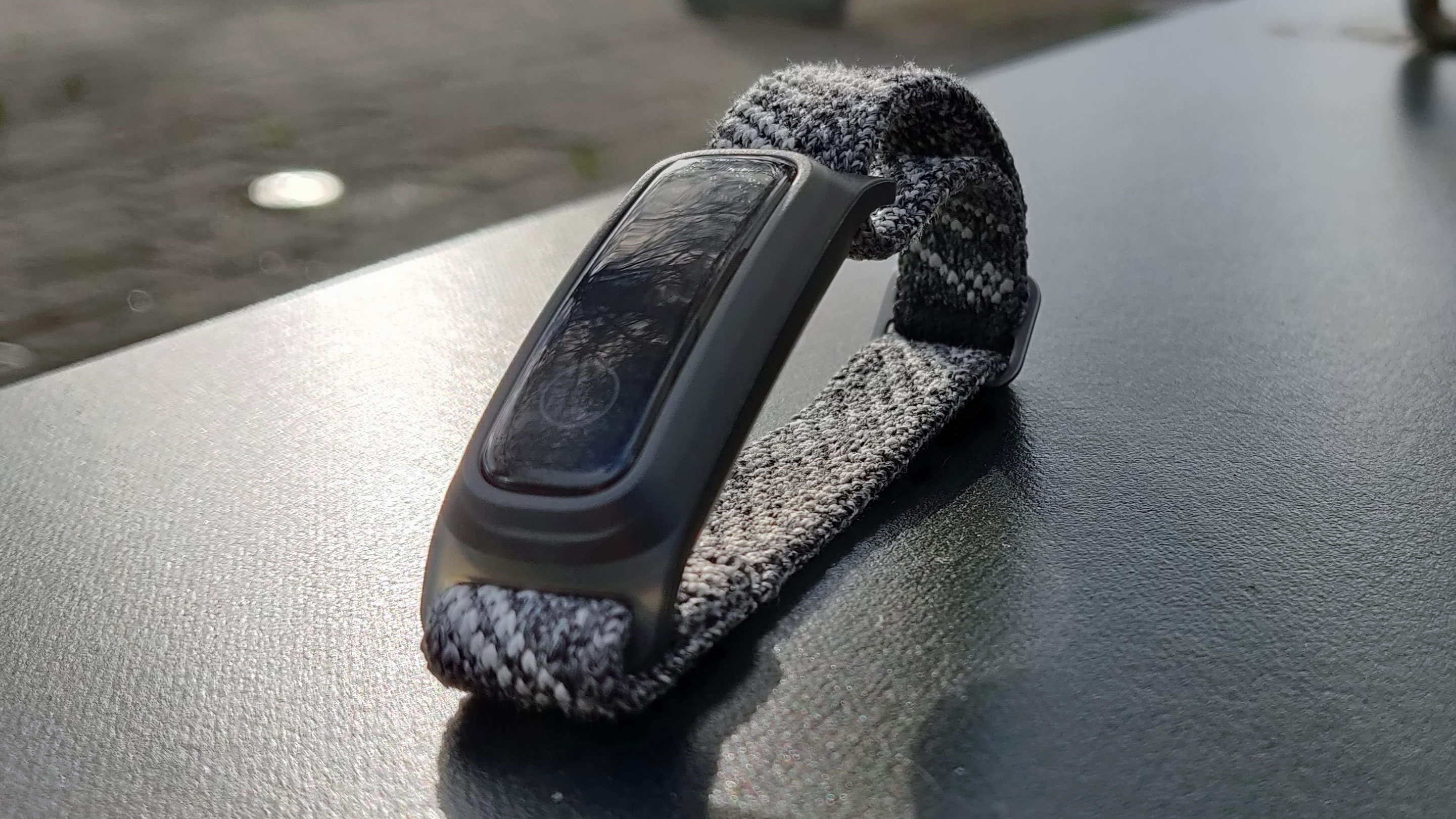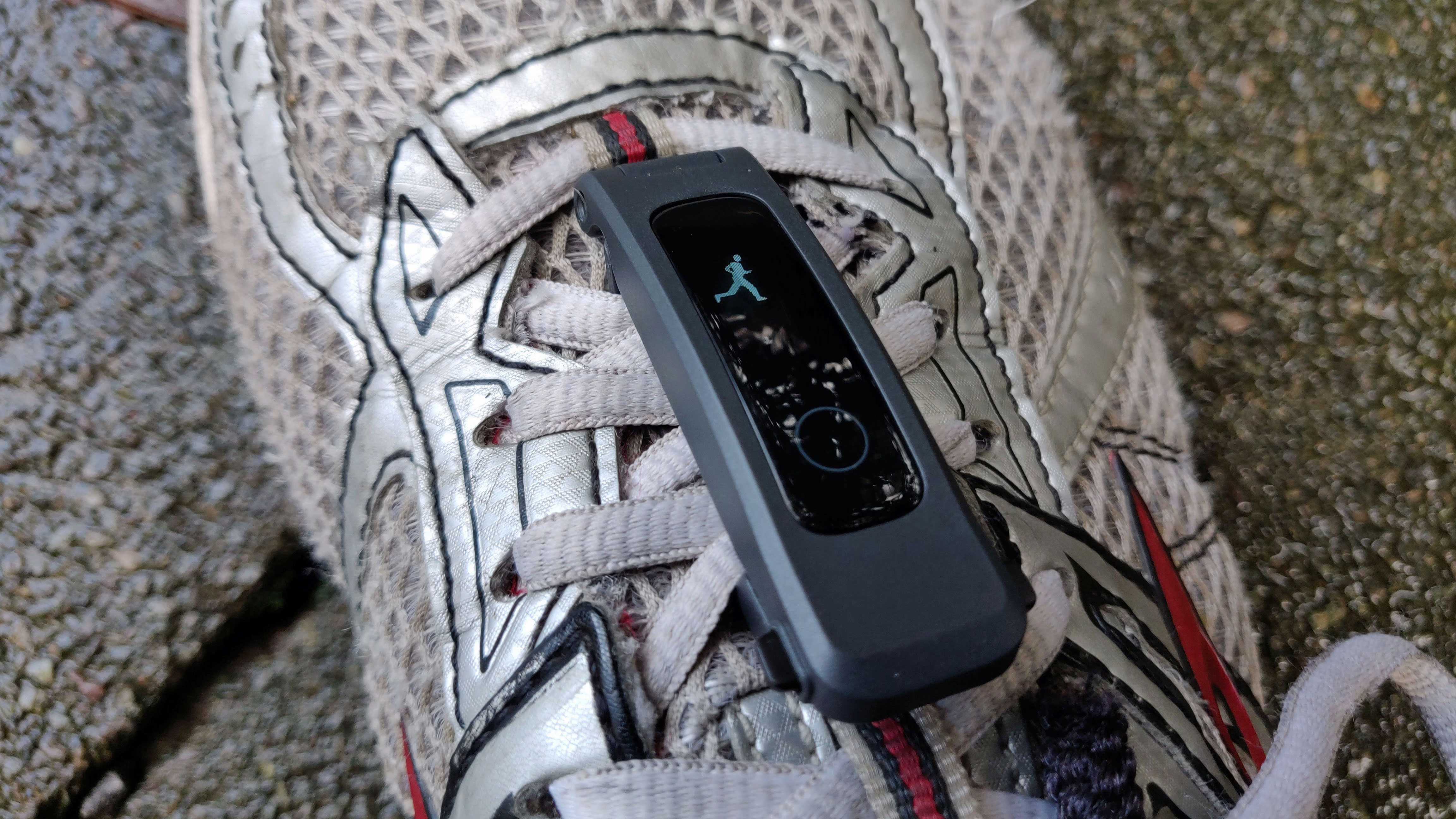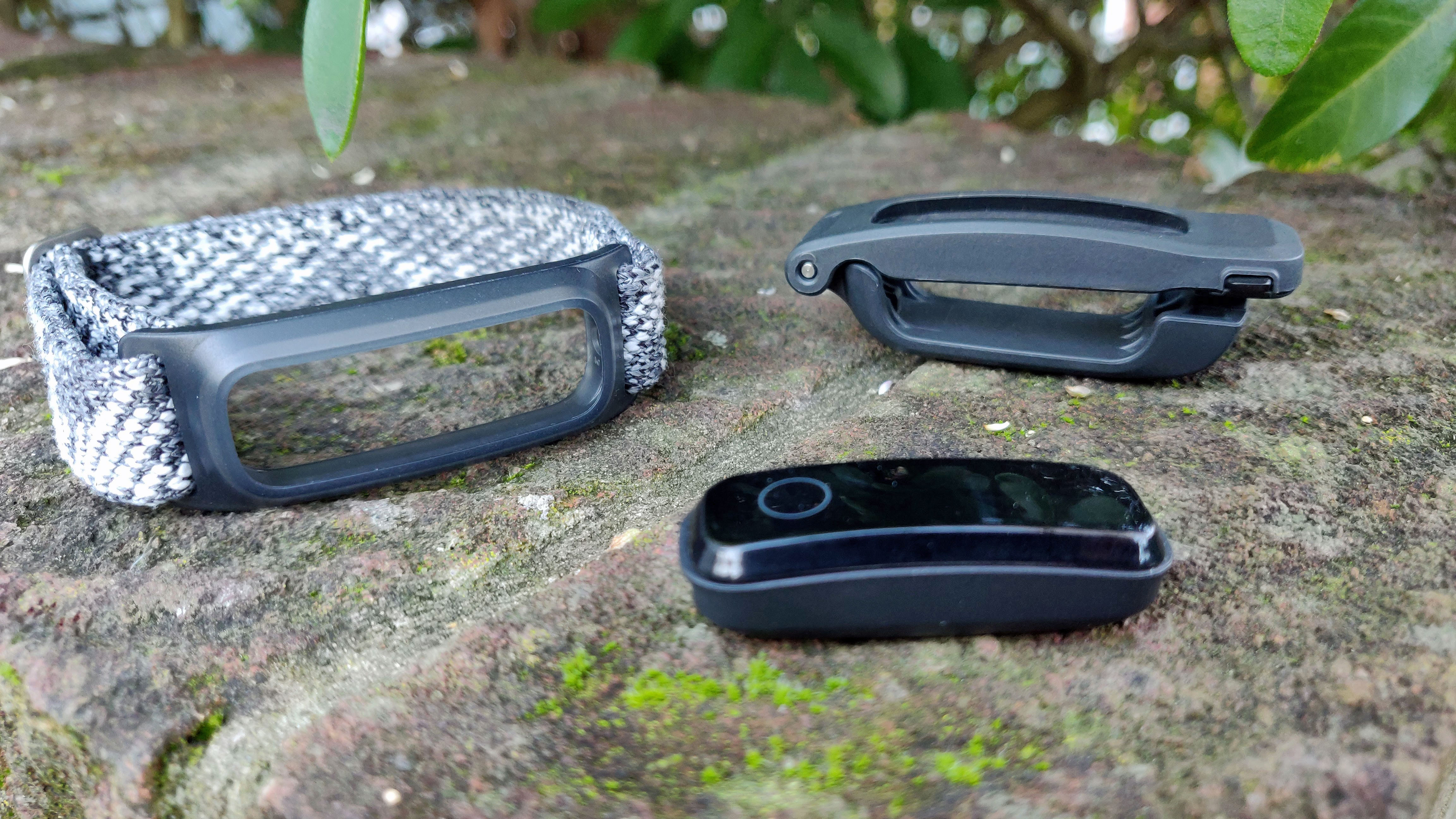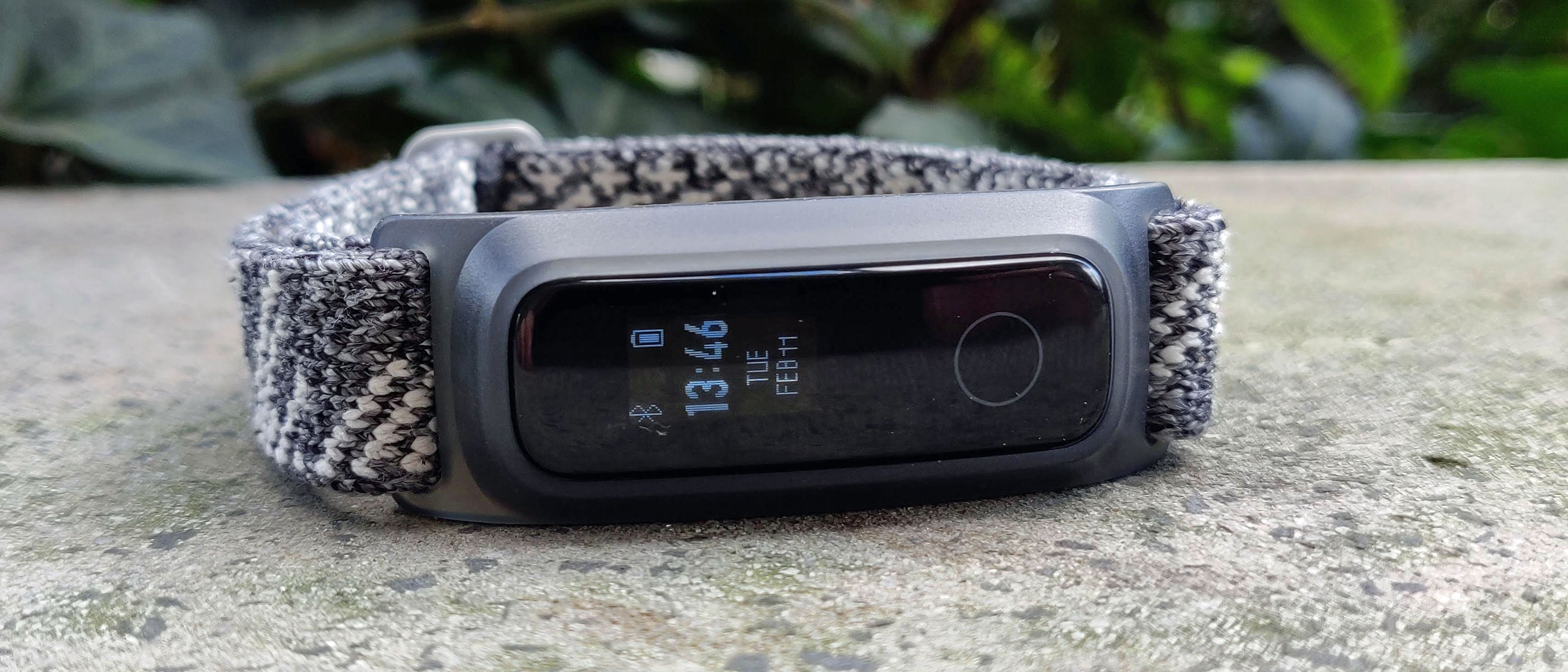Why you can trust TechRadar
Notifications, step tracking, sleep tracking and software
- Accurate step tracking
- Basic notifications
- Sleep tracking is solid but has its quirks
As a notification tracker, the Honor Band 5 Sport is bare-bones. Most notifications simply get a generic icon, but calls are treated differently, and get a longer, more persistent vibration, as do alarms.
If you need help waking up in the morning, you can set a 'smart alarm' for a five-minute window, and the band will wake you up if it detects you’re in a light sleep, which is a nice touch, and one we wouldn’t expect from a device this cheap. Notifications were, at the very least, reliable, and it didn’t miss any, as far as we can tell.
On the sleep tracking itself, as we’ve said in the past: movement alone is not a good measure of whether you’re in deep or light sleep, so we took anything the Sport told us in that regard with a pinch of salt.

However, it roughly mirrored the tracking of the Amazfit GTR smartwatch, which has a heart rate monitor, and it was actually more accurate than the GTR when it came to distinguishing between being sleep and lying awake.
For example it knew, one morning, that we’d woken up, laid still for 10 minutes, and then went back to sleep, although bizarrely it didn’t mark that time as 'awake' on its app, despite that being an option.
Step tracking was accurate, whether we wore the band on our wrist or our foot. When we tested by walking 100 paces multiple times, the band was always correct to within five steps, and sometimes it was exactly right.
As for navigating the device’s menus, it’s easy enough, despite there only being one button. A press takes you between screens, and if you need to interact with anything further - to start a run while in footwear mode, for example - you give it a long press. It never failed to recognize these long presses.
Exercise tracking and app
- Run tracking is mostly accurate
- Basketball mode failed to register most of our jumps
- Lack of GPS and heart rate monitoring hold it back
The base Honor Band 5 tracks outdoor runs, indoor runs, outdoor walks, indoor walks, indoor cycling, cross trainer, rowing, indoor swimming, and free training. The Sport tracks just running and basketball, the latter feeling like an oddly specific choice, but it’s basically a way of showing off the new six-axis motion tracking sensor.
Unless you’re a basketball player, that sensor comes in most useful when you're running, and the band gives you more running data than you’d get in fitness trackers four times the price.
Placing it on your foot gives you measurement for stride length, steps per minute, your average contact time with the ground, your average landing impact, the inward rotation of your foot while running, the swing angle of your leg, and your foot strike pattern, which tells you if you’re running more on your heels, midfoot or forefoot.
The two important things here are, one, accuracy, and two, how easy it is to translate that data into changes in your running style, particularly to avoid injury. On the first, the Sport seems, all-in-all, pretty accurate.
We tested it by adopting various running styles, lengthening our stride, keeping our feet on the ground longer between strides, changing the angle of our foot, and swinging our legs more, across multiple days and multiple runs. Every time, the results that popped up on our app mirrored our actions. It was by no means perfect, and occasionally gave us a wonky result that made little sense, but as an indicator of patterns and of changes over time, it seems reliable.
Where it failed miserably was on foot strike pattern. Initially, it told us that we were landing on our heel 100% of the time. That seemed odd to us, as it had never been pointed out before.

Sure enough, when we ran almost exclusively on our toes for five minutes - a hell of a calf exercise, by the way - the device still told us that we were landing on our heel most of the time. We can only guess that’s because the angle of our shoe, and therefore the angle the device was resting at, affected its calculations. But if this was the case for us, it will be the case for lots of other people too.
On translating that data into something useful, Huawei's (which own's Honor) health app fares admirably. It tells you whether your data is in the normal range for each parameter, and gives you some advice for correcting anomalies.
Telling us that our 'eversion excursion' is high would be totally useless on its own, but by giving concrete advice - ankle circles and heel raises - it allows you to act on it.
We’d question how useful the information is in the long run, though. Tracking your stride length over time could turn addictive, but once you know your leg angle during running, there’s not much you’re going to do to adjust it.
Once you’ve corrected mistakes, most of the data is only mildly interesting, and should remain consistent over time.
The lack of GPS means you can’t actually track where you’ve run without another device, too, and a lack of heart rate monitoring - plus an inability to import heart rate data from other devices - means that the Honor Band 5 Sport can only really be in the supporting cast when it comes to your fitness tracking, rather than the star of the show.
In basketball mode - which gives you a score for things like sprinting, movement, and acceleration, as well as jump height and hang time - the band failed to register most of our jumps, which was a pain.

As a test, we stood on a spot and performed ten high-effort jumps in a row, all of roughly the same height. The device, on ending the exercise, thought we’d only jumped three times. It got the height right for those three jumps, as measured against plyo boxes in the gym, but it’s hard to rely on.
Still, we like the fact that the band assigns you a basketball score based on the factors listed above and displays it all in a pretty graph in the app. If you play basketball regularly, turning the band on during sessions will, if nothing else, give you something fun to look at later, and let you see how your vertical jump is progressing.
That’s the theme with the app: its charts and graphs are easy on the eye. It’s far too hard to boot it up the first time - you have to download a second Huawei app just to get it working - but once you’re in, it displays all of your workout data in clear, colorful ways.
Each run has a main page that lists all your stats in rows, plus a separate tab for charts, where you can see how your cadence changed over the course of the exercise, for example.
Battery life
- Honor promises two weeks of life between charges
- The claims hold up even with regular use
Battery life is a big plus: Honor says the Band 5 Sport will run for two weeks on a single charge, and in the week we used it, it drained to 50% exactly.
You wouldn’t expect a device with a screen this small to burn through battery, but still, two weeks between charges for any smart device is something to be applauded. We used it almost daily for runs, and kept it on to track our sleep most nights.
Current page: Fitness, software and battery life
Prev Page Introduction, design and display Next Page Verdict and competition